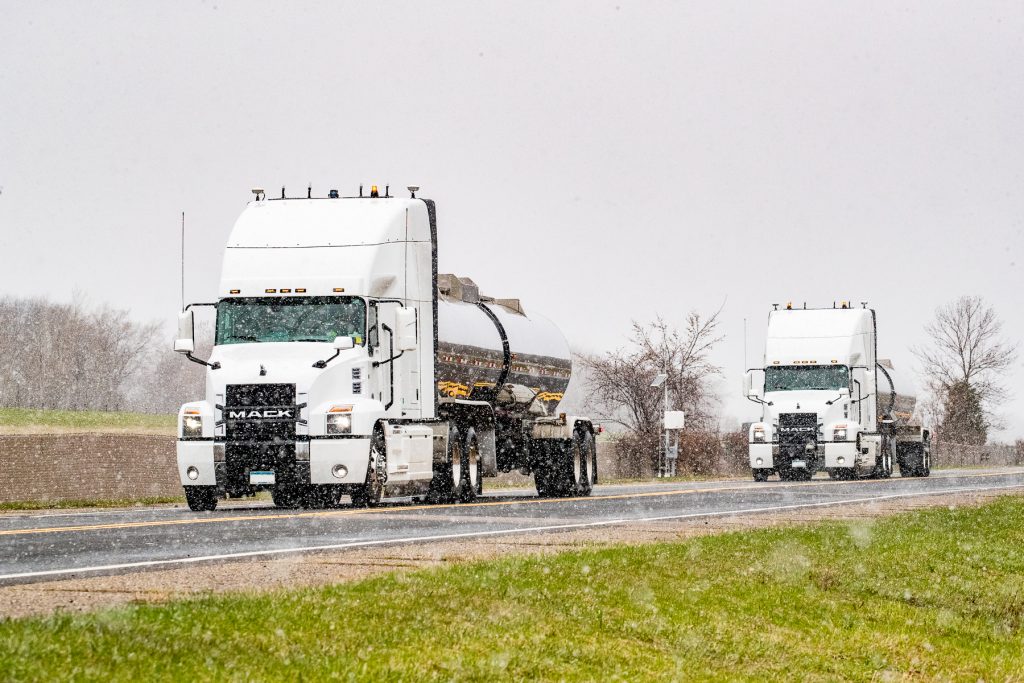
SAN DIEGO—Kratos Defense & Security Solutions Inc. said it has multiple self-driving trucks deployed across the United States supporting new deployment use cases and territories to help solve real-world workforce and safety issues burdening critical transportation and supply chain operations.
Since Kratos first adapted its U.S. Department of Defense driverless technologies to commercial markets in 2014, the company has continually expanded its driverless systems and applications to the overall driverless trucking industry.
Starting with a driverless system design added to existing vehicles rather than only being available in newly purchased, preconfigured vehicles, the Kratos technology can be applied to hundreds of millions of existing vehicles. This approach makes the application of driverless trucks accessible to virtually any municipality, organization, or company operating trucks today, the company said.
The Kratos systems are deployed in short-haul, leader-follower platoons where a human-driven leader truck transmits navigation data to a driverless follower truck traveling closely behind. This short-haul deployment configuration provides a near-term driverless truck solution by avoiding the need to navigate the often-complex multi-state legislative environments of long-haul operations.
Kratos’ deployment configuration also benefits from using human-in-the-loop decision making to address edge- and corner-case scenarios versus total reliance on artificial intelligence and machine learning algorithms. This strategy has proven successful and is the key enabler for Kratos to deploy a range of self-driving trucks across the United States, the company said.
“Our technology, approach and cost level is unique and game changing,” said Steve Fendley, president of Kratos Unmanned Systems Division. “This sets us up with differentiators that can capture the existing truck/vehicle market rather than depend only on customers who can afford to buy new trucks [and/or] vehicles to achieve driverless capability. To this end, our market potential is tremendous and existing today. Couple that with the increasing driver shortage and the potential multiplies.”
ATMA
Kratos deployed its first commercial self-driving trucks to support transportation infrastructure maintenance for increasing work zone safety as the Autonomous Truck Mounted Attenuator (ATMA). The ATMA, developed in collaboration with multiple state Department of Transportation and Highway Patrol agencies, is a first-of-its kind automated maintenance truck operating in a Leader Follower Platoon with the driverless technology retrofit to existing fleet vehicles.
The ATMA is deployed as a shadow vehicle replacing conventional human operated Truck Mounted Attenuator vehicles used to protect workers and equipment ahead in mobile highway maintenance operations. Thousands of TMA trucks are deployed across the globe every day, and the drivers of these vehicles risk their lives daily as human-driven crash barriers protecting maintenance crews from an errant vehicle entering the work zone. To date, Kratos has deployed 12 ATMAs across the United States, as well as one in England, and the system has been recognized as a game-changing critical safety alternative to human drivers, the company said.
Leveraging the success of the ATMA, Kratos has also retrofit driverless technology to Class 8 semi tractor-trailer trucks deployed in a leader-follower platoon using the self-driving system to harden supply chain activity against the effect of the truck driver shortage. According to the American Trucking Association, currently there is a deficit of 80,000 available qualified truck drivers in the United States, a number anticipated to rise to 160,000 by 2030.
Addressing this issue, Kratos’ driverless technology is strategically deployed to support integrated end-to-end supply chain activity achieving industry safety and operational goals. The first systems were deployed in North Dakota and Minnesota.
“Ensuring safety and business continuity are critical customer concerns and Kratos self-driving trucks are proving to be a viable solution for meeting these goals,” said Maynard Factor, vice president of business development for the Kratos Unmanned Systems Division.

